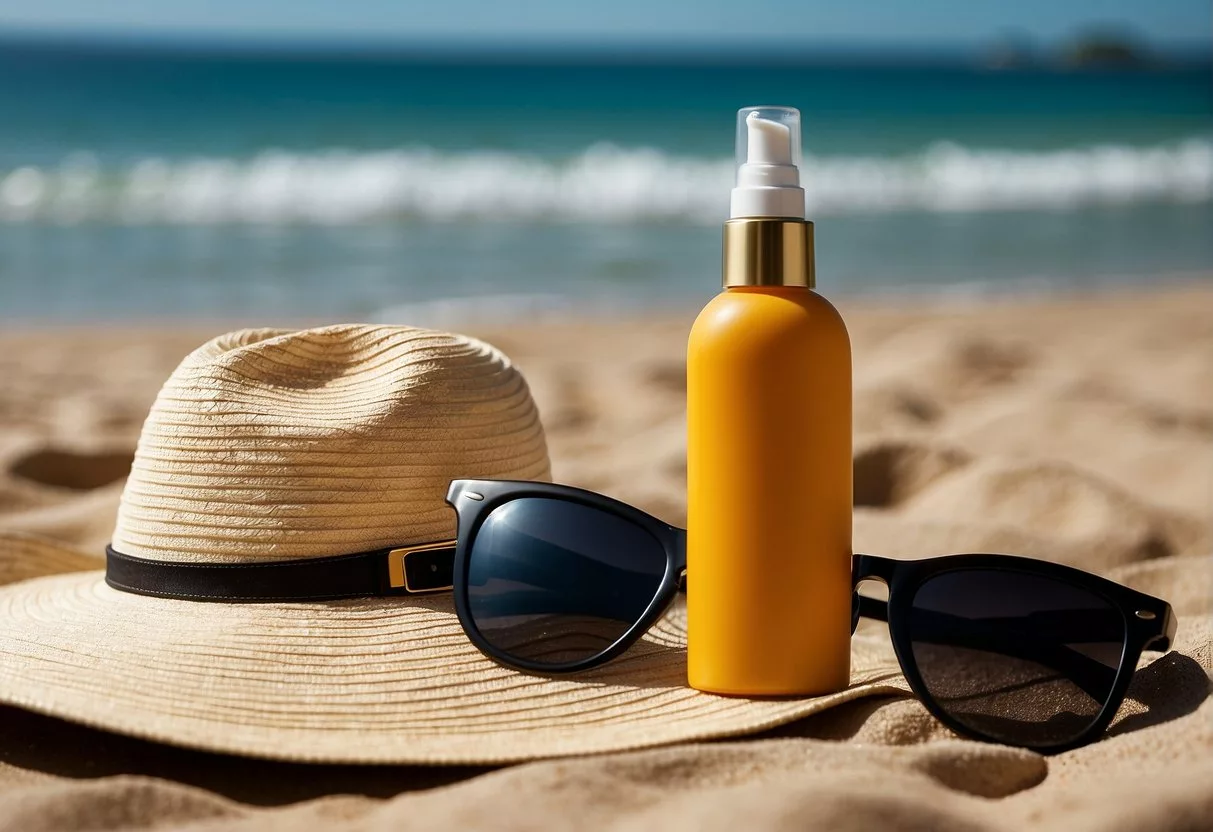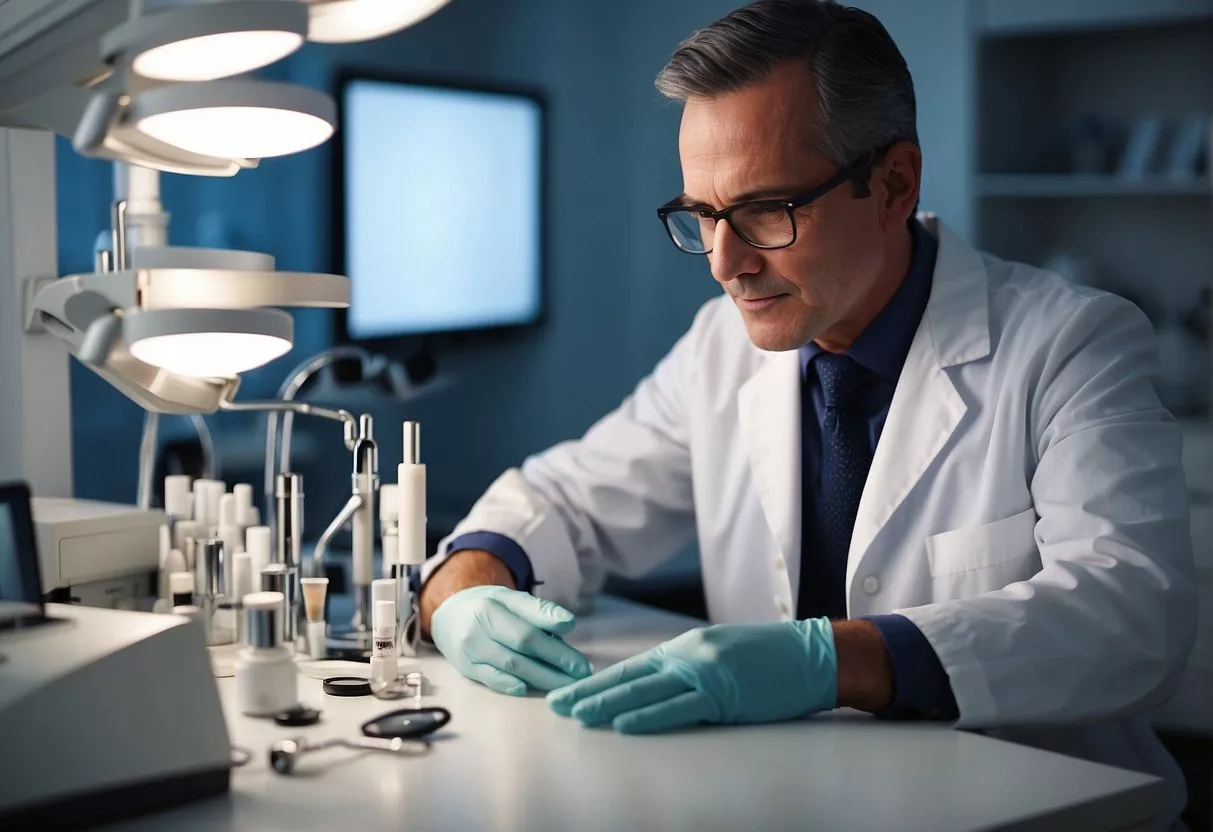Maintaining the health of one’s skin is of paramount importance. After all, it’s the body’s largest organ, serving as the first line of defense against environmental hazards.
A variety of skin diseases can affect individuals of all ages, posing both health risks and psychological stress. Prevention involves a multifaceted approach, including protection from excessive sun exposure.
Excessive sun exposure can lead to skin cancer and premature aging, commonly seen as a tan or sunburn. It’s also critical to understand that factors like oil production, hygiene practices, and even genetic predisposition play roles in the development of certain skin conditions.

Preventive strategies for skin diseases often stress the significance of lifestyle choices that promote skin integrity and reduce risk factors. Using sunscreen, wearing protective clothing, and avoiding peak ultraviolet radiation hours are some practices to prevent skin harm.
At the same time, managing contact with irritants that can cause conditions like contact dermatitis is essential. Should skin diseases arise, treatments can range from topical applications to more advanced interventions.
Ongoing management might be necessary to maintain skin health. Adapting to individual needs, including age-related changes and responding to early signs of skin disorders, can enhance outcomes and reduce the likelihood of complications.
Key Takeaways
- Effective skin disease prevention includes minimizing exposure to harmful UV rays and irritants.
- Personal lifestyle choices and hygiene practices are essential for maintaining skin health.
- Early detection and appropriate treatment are crucial for managing various skin conditions.
Understanding Skin Diseases

Prioritizing knowledge about skin diseases, including types, symptoms, and impacts of genetics and environment, plays a crucial role in the prevention and management of these conditions.
Types and Causes
Skin diseases come in various forms, with each having its specific causes. For example, acne is often the result of clogged pores due to oil and dead skin buildup, whereas conditions like psoriasis and eczema are usually tied to the immune system’s response to certain triggers.
Skin cancer, one of the most serious skin diseases, arises from mutations in skin cells, frequently as a consequence of UV exposure. Meanwhile, conditions like vitiligo are characterized by the loss of skin pigment, and are believed to have autoimmune origins.
Common Symptoms
The symptoms of skin diseases are as diverse as the conditions themselves. They can range from itchy and dry skin in cases of eczema to the red, scaly patches seen in psoriasis. Rashes, blisters, and dark spots are other common indicators. Rosacea is marked by facial redness and sometimes pimples. Recognizing these warning signs early can lead to more effective treatment.
Impact of Genetics and Environment
Both genetic predispositions and environmental factors play significant roles in the manifestation of skin diseases. Genetics can predispose individuals to conditions like eczema, psoriasis, and even skin cancer. Environmental triggers, such as allergens, irritants, or stress, are known to exacerbate symptoms or induce flare-ups in existing conditions.
Significance of Early Diagnosis
Early diagnosis by a dermatologist can greatly influence the prognosis of skin diseases. Conditions like skin cancer, when identified and treated early, typically lead to a better outcome. Similarly, a timely diagnosis can help manage chronic diseases such as psoriasis by mitigating symptoms and preventing progression to more severe stages. Therefore, understanding the warning signs and when to seek a doctor’s advice is essential in effectively treating these conditions.
Preventive Measures

Taking proactive steps to protect and maintain skin health can significantly reduce the risk of skin diseases. This section discusses targeted strategies for sun protection, establishing healthy skin care routines, and the role of nutrition in preserving skin health.
Sun Protection Strategies
To mitigate the risk of sun damage and prevent conditions like sunburn, it is essential to use effective sun protection strategies.
Applying broad-spectrum sunscreen[1] with a minimum SPF of 30 is recommended, especially when the UV index is 3 or higher. Sunscreen should be reapplied every two hours or after swimming or excessive sweating.
Additionally, wearing clothing that covers the skin, such as long sleeves and pants, can protect against harmful UV rays. A wide-brimmed hat can provide shade and protection for the face, head, ears, and neck.
Healthy Skin Care Routines
Maintaining a basic skin care routine is crucial for preventing common skin issues like acne, which can result from blocked skin follicles.
A daily regimen should include cleansing to remove dirt and excess oil, followed by moisturizing to prevent dry skin and itchiness. Individuals should opt for non-comedogenic products to avoid clogging pores.
It’s also important to avoid harsh soaps and cleansers that can strip away natural oils, leading to increased dryness and irritation.
Nutrition and Skin Health
A balanced diet plays a pivotal role in maintaining skin health and can help in preventing certain health conditions that manifest on the skin.
A diet rich in vitamins, minerals, and antioxidants is beneficial. For example, omega-3 fatty acids can help in reducing inflammation, and foods high in vitamin C and E can protect the skin from damage. Staying well-hydrated is also vital, as water consumption helps to maintain skin elasticity and moisture.
Treatment and Management

Effective treatment and management of skin diseases involve both medical interventions and natural approaches, depending on the condition’s severity and causes. These strategies aim to alleviate symptoms such as itchiness and prevent complications like scarring.
Medical Treatments
When it comes to medical treatments, a dermatologist is often the professional individuals turn to for managing skin conditions.
Medications play a crucial role, especially when addressing severe symptoms. For instance, cases with significant burns or scarring might require prescription creams or antibiotics to prevent infection and promote healing. Innovative therapies also include biologic drugs for conditions like psoriasis.
Additionally, for acne-prone skin, treatments cover a range of options from topical retinoids to oral contraceptives, often prescribed based on the acne’s cause and severity.
- Prescription Medications:
- Antibiotics for bacterial infections
- Antifungal treatments for fungal causes
- Topical retinoids for acne
- Oral medications for systemic issues
- Procedural Interventions: Dermatologists may also recommend procedures such as:
- Chemical peels for skin rejuvenation
- Laser therapy for scars or persistent lesions
Natural and Holistic Approaches
In contrast, natural and holistic approaches may help manage mild conditions and complement medical treatments.
For example, aloe vera is widely recognized for its soothing properties that can reduce itchiness and inflammation in minor burns or irritations.
People searching for a DIY acne treatment might find success using honey or tea tree oil, which have antibacterial qualities. However, one should be cautious and conduct these treatments under guidance to avoid skin damage.
Proper skin care, particularly for those with acne-prone skin, is crucial and should include gentle, non-comedogenic products that don’t block pores.
- Alternative Remedies:
- Aloe vera for soothing skin
- Tea tree oil for its antiseptic properties
- General Skin Care:
- Use mild cleansers
- Non-comedogenic moisturizers to prevent clogged pores
Special Considerations

Properly addressing special considerations involved in the prevention of skin diseases is critical. It ensures that individuals are aware of the unique care required for different life stages and sensitive areas.
Skin Conditions in Different Life Stages
Age plays a pivotal role in skin health, with distinct concerns at each life stage.
Babies commonly experience childhood eczema, known for its dry, itchy skin, and can benefit from gentle, hypoallergenic skincare products.
As individuals mature into adulthood, the persistence of conditions like adult eczema (atopic dermatitis) requires a tailored approach that might include regular moisturizing and avoidance of trigger substances.
For older adults, skin tends to become thinner and drier, necessitating a focus on hydration and protection to prevent disease. They must be cautious about the signs of skin diseases, often consulting with a healthcare provider to manage symptoms effectively.
Caring for Sensitive Areas
Sensitive areas, which include the scalp, around the eyes, and organ-related skin, demand extra precautions.
The scalp can be prone to conditions such as seborrheic dermatitis, which requires specialized shampoos for treatment.
Moisturizers and gentle cleansers help maintain the skin’s natural barrier without exacerbating issues like hair loss or irritating the scalp.
Individuals with atopic dermatitis must take care when treating sensitive areas, as the skin is more susceptible to inflammation and irritation. Non-irritating, fragrance-free products are generally recommended to maintain skin integrity, especially for organs with external skin layers, like the eyes.
Emerging Research and Advances

Recent advancements in molecular research are showing promising potential in the prevention of skin diseases.
Studies suggest that certain compounds, when applied topically, might prevent clinical aging phenotypes. These compounds work by inhibiting glycation and oxidative stress, thus delaying cellular aging.
For more detailed information, readers can refer to the study on Molecular Research and Treatment of Skin Diseases[2].
In bioengineering, three-dimensional human skin equivalents (HSEs) have developed as vital tools for in-vitro skin disease studies.
These models, including both epidermal and dermal compartments, have enhanced complexity and realism by integrating adnexal structures. This integration aids significantly in understanding the mechanistics of skin diseases.
To gain deeper insight into these advances, the Bioengineered Efficacy Models of Skin Disease[3] can be visited.
Furthermore, the use of skin commensal bacteria, like S. epidermidis, provides an emerging chassis for engineered live biotherapeutic products (eLBPs) in skin disease treatment.
These treatments celebrate the innate anti-staphylococcal activity of S. epidermidis. The dynamics of these new treatments are detailed in the Nature article[4].
The quest for novel treatment options has directed researchers to explore new methodologies in topical drug delivery for skin disorders.
They aim to overcome the challenges posed by the skin’s natural barrier properties. The recent review on Topical Drug Delivery for Skin Disorders[5] covers such new insights in the field.
Frequently Asked Questions

The following information addresses common inquiries related to the prevention of skin diseases, focusing on habits, diet, skincare, sun protection, early detection, and hygiene.
What habits can help reduce the risk of skin diseases?
Incorporating habits like moisturizing regularly can maintain skin’s integrity, thus reducing the potential for skin disorders.
Additionally, avoiding excessive touching or scratching can prevent irritation and possible infections.
How can diet influence the prevention of skin disorders?
A balanced diet enriched with antioxidants and omega-3 fatty acids contributes to skin health.
Foods high in vitamins A, C, and E are especially beneficial for maintaining strong and resilient skin.
What are the most effective skincare routines for preventing skin issues?
Effective skincare routines include gentle cleansing to remove dirt and sweat, followed by the application of a suitable moisturizer.
It’s important to select products appropriate for one’s skin type to prevent issues such as acne or dermatitis.
What role does sun protection play in preventing skin diseases?
Sun protection is critical for preventing skin diseases, including melanoma.
Using a broad-spectrum sunscreen, seeking shade, and wearing protective clothing can significantly reduce the risk of UV radiation damage.
How can early detection contribute to the prevention of serious skin diseases?
Early detection of skin changes can lead to timely treatment, improving outcomes for serious skin diseases.
Regular skin self-examinations and professional skin checks are vital for identifying potential issues promptly.
What are the best practices for maintaining skin hygiene to prevent skin problems?
Good practices for skin hygiene involve daily bathing and using mild soaps. Also, make sure to change into clean clothes regularly. Avoiding shared towels and personal items can also prevent the transmission of skin infections.
cancer, Cardiometabolic Diseases, Lifestyle Behaviours, Mediation Analysis, Multimorbidity, prevention, preventive medicine, public health, risk factors, Socioeconomic Position
CCMS, culinary medicine, diet in chronic diseases, nutrient intake optimization, nutrition, obesity, prevention, type 2 diabetes
References
- Skin Cancer Prevention. https://www.skincancer.org/skin-cancer-prevention/ Accessed November 8, 2025
- Molecular Research and Treatment of Skin Diseases. https://www.ncbi.nlm.nih.gov/pmc/articles/PMC9141297/ Accessed November 8, 2025
- Bioengineered Efficacy Models of Skin Disease: Advances in the Last 10 Years. https://pubmed.ncbi.nlm.nih.gov/35214050/ Accessed November 8, 2025
- Recent advances in single-cell engineered live biotherapeutic products research for skin repair and disease treatment. https://www.nature.com/articles/s41522-023-00463-8 Accessed November 8, 2025
- Just a moment.... https://pubs.acs.org/doi/10.1021/acsomega.2c08016 Accessed November 8, 2025
